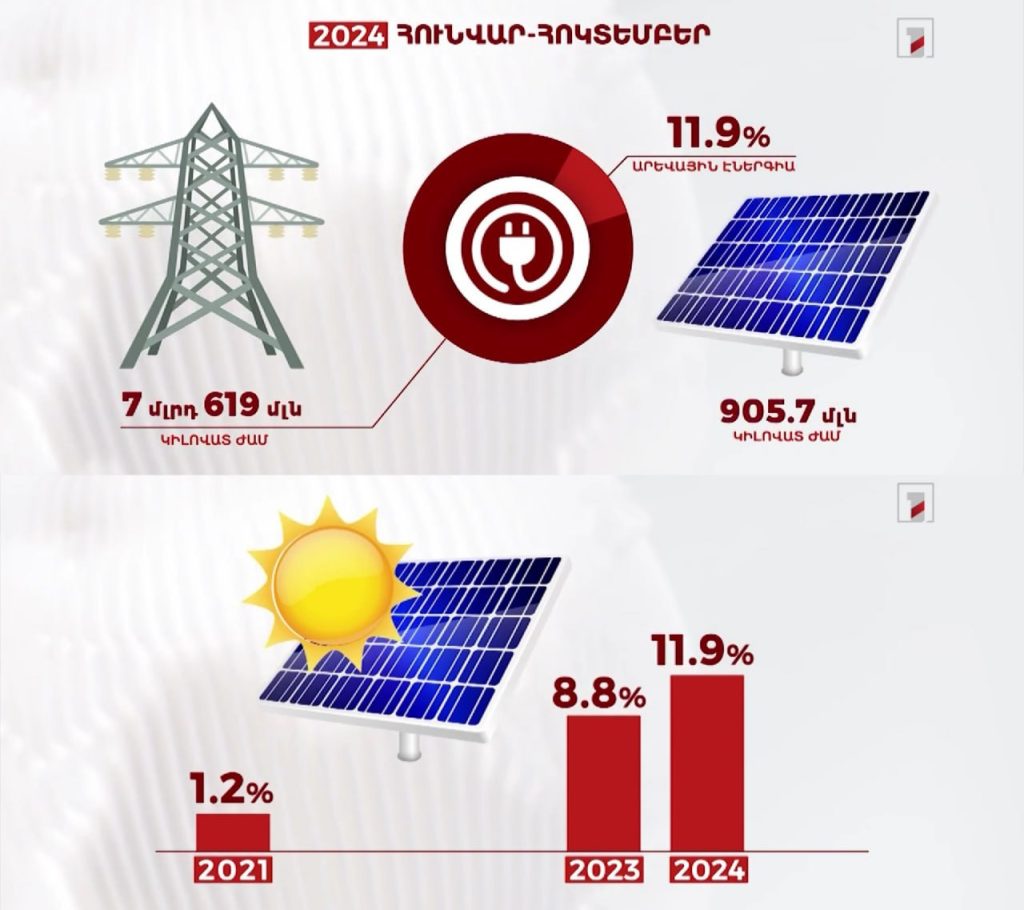If in 2021 the share of solar energy in the total volume of electricity production in Armenia was 1.2%, then in 2024 it will be ten times more – 11.9%. This remarkable growth highlights the country’s commitment to transitioning toward renewable energy sources and reducing dependence on fossil fuels. The shift is driven by several key factors, including government incentives, international investments, and technological advancements in solar energy.

Solar Energy production in Armenia in 2023-2024
A Strategic push for Solar energy in Armenia
Armenia’s geography provides an ideal setting for solar power generation, with over 2,500 hours of sunshine annually. Recognizing this potential, the government introduced policies and subsidies to encourage the construction of solar farms and the adoption of rooftop solar systems. Programs like net metering and tax benefits for renewable energy projects have attracted private investors and spurred the rapid development of solar infrastructure.
Major Solar Projects
Several large-scale solar power plants have come online in recent years, significantly contributing to the growth of solar energy production. The Masrik-1 Solar Plant, Armenia’s largest solar project, became operational in 2022, adding 55 MW of capacity to the national grid. Similar projects, such as Ayg-1 and Ayg-2, are in various stages of completion, ensuring a steady increase in solar energy’s share in the energy mix.
Economic and Environmental Benefits
The expansion of solar energy has economic and environmental advantages. By reducing reliance on imported natural gas, Armenia enhances its energy security and stabilizes electricity costs. Moreover, the shift toward clean energy helps the country meet its climate goals, reducing greenhouse gas emissions and aligning with global sustainability efforts.
Despite the progress, challenges remain in Armenia. The integration of variable renewable energy sources like solar requires upgrades to the existing grid infrastructure. Investments in energy storage systems, such as batteries, are essential to ensure a stable and reliable power supply. Additionally, continued efforts to educate the public and businesses about the benefits of solar energy will help maintain momentum in the sector.
The Road Ahead
Armenia’s ambitious solar energy targets reflect a broader vision of energy independence and environmental stewardship. As solar technology becomes more affordable and efficient, the country’s energy landscape will continue to evolve, positioning Armenia as a regional leader in renewable energy.
By 2030, with further advancements and investments, solar energy could account for an even greater share of the country’s electricity production, paving the way for a cleaner and more sustainable future.

